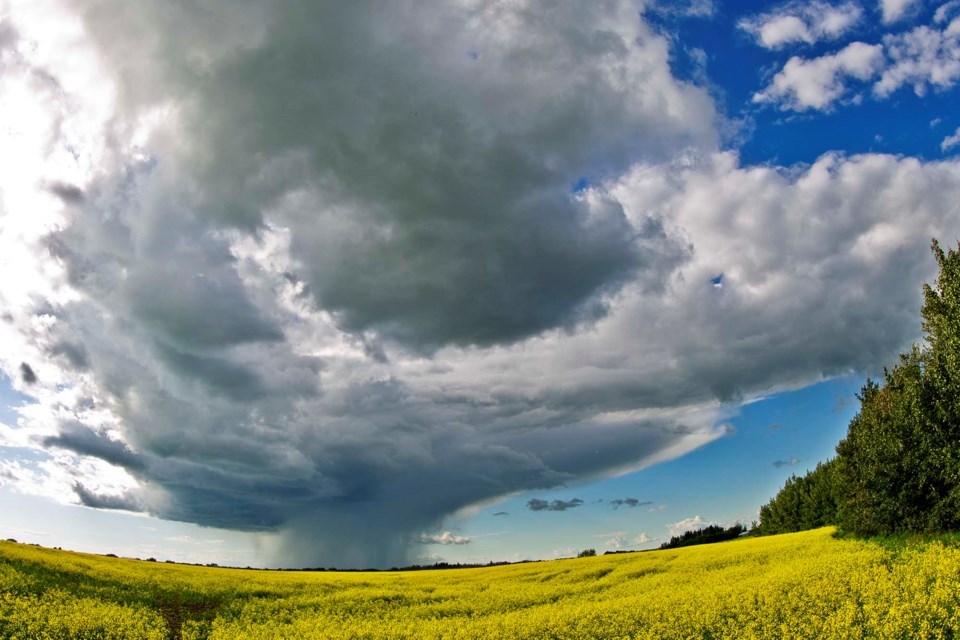Low vaccine uptake in rural communities is partly due to an overall rural culture of independence and skepticism, said Rural Municipalities of Alberta president Paul McLauchlin.
The fourth wave of COVID-19 has come to rural communities in the province, in regions that were relatively unscathed during the first three waves of the pandemic.
McLauchlin said rural Alberta is not unique and low rural vaccination rates are the same across the country.
“It's really a cultural ethos of rural folks [that] we're independent. The majority of people, they don't like being told what to do. They're sceptical. And that's just that's the culture of rural Canadians and rural North Americans,” McLauchlin said.
In his home county of Ponoka where he serves as reeve, he is surprised at just how low vaccination rates have been
“It's a little bit shocking,” McLauchlin said.
In Ponoka County, some 54.9 per cent of residents have their first dose, while 48.9 per cent of all ages have two doses.
As a result, the community is seeing high active cases counts, with 266 active cases, out of a total 3,720 cases they have seen since the beginning of the pandemic.
The community has had 19 deaths and they have 966.4 active cases per 100,000 people, compared to Edmonton which has 332.5 active cases per 100,000, Calgary with 295 per 100,000 and Red Deer with 720.9 active cases per 100,000.
“There's more COVID cases in our community than we've seen since the beginning,” McLauchlin said.
The reeve said vaccination rates are really low in the local high schools, which is a concern with more kids back in the classrooms after the summer break. COVID-19 has also been found in elementary schools in his county.
McLauchlin said he is giving grace and compassion to those who are unvaccinated because they are making choices based off their entrenched belief systems, but he is concerned about misinformation spreading through the community.
“Who am I to judge where they're at?”
But the fear is that people are going to get sick and die because of the misinformation that is circulating, like the myth that taking ivermectin, a medicine given to horses, will help to treat COVID-19.
"What really worries me is ultimately this misinformation is going to lead to people getting sick and possibly people passing away," McLauchlin said.
McLauchlin said during the first three waves he didn't know too many people who were personally impacted by COVID-19 infections, but this wave has made the virus personal for many living in rural Alberta.
Now COVID-19 has come to rural Alberta and hitting many communities that escaped unscathed from the virus in the first three waves.
In Medicine Hat and neighbouring Cypress County, there are 988 active cases per 100,000 and 1,035.5 active cases per 100,000, respectfully. The city has 673 active cases and since Aug. 28 they have had 20 more residents pass away.
“Now it's getting real,” McLauchlin said.
Leading up to this fourth wave a lot of the low vaccination rates can be blamed on procrastination or vaccine hesitancy, the reeve said, because there was no rush to get the shot if you didn’t know anybody with COVID-19.
“Some of these people are really just victims of the reality where they're getting mixed messages and they're not really seeing COVID-19 as real,” McLauchlin said.
Early on, access may have been an issue for those in rural communities, with McLauchlin having to drive an hour to a pharmacy to get his shot, but now harvest season may be interfering with vaccination uptake in farming communities.
Farmers are on their tractors all day long trying to get their crops off and don’t have time to go get their shot right now.
“We need to be compassionate and have each other's back and not shame anybody and just let's just get this over with.”
Getting COVID-19 numbers down across rural Alberta and getting vaccination rates up to a place to slow the spread is going to take a lot of effort, McLauchlin said.
“This is going to be a long haul and I think what I’m most concerned about is we’re going to see it for a lot longer in rural Alberta.”
Read more from StAlbertToday.ca



